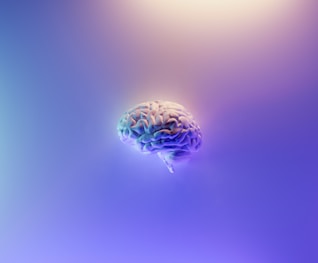The Importance of Finding the Right Suboxone Doctors Near Me: A Comprehensive Guide
Introduction
Opioid addiction is a pervasive and devastating health crisis affecting millions worldwide. Overcoming addiction is a challenging journey that requires comprehensive and compassionate care. Suboxone, a medication-assisted treatment (MAT), has emerged as a powerful tool in managing opioid dependence, offering a sustainable and science-backed approach to recovery. For individuals seeking effective treatment, finding "suboxone doctors near me" is a crucial step towards regaining control of their lives and achieving lasting sobriety.
In this article, we will delve into the significance of Suboxone in opioid addiction treatment, the role of Suboxone doctors, and how to find the right healthcare providers near you. We will also explore the benefits of local treatment options, what to expect during your treatment journey, and essential tips for maximizing your recovery. This comprehensive guide aims to provide valuable insights and resources for those seeking help for themselves or their loved ones.
Understanding Suboxone and Its Role in Opioid Addiction Treatment
Suboxone is a prescription medication that combines buprenorphine and naloxone, two active ingredients that work together to reduce withdrawal symptoms and cravings associated with opioid addiction. Buprenorphine is a partial opioid agonist, which means it activates the opioid receptors in the brain but to a much lesser extent than full agonists like heroin or prescription painkillers. This activation helps alleviate withdrawal symptoms and cravings without producing the intense euphoria associated with opioid misuse.
Naloxone, on the other hand, is an opioid antagonist. It blocks the effects of opioids and is included in Suboxone to prevent misuse. If Suboxone is taken as prescribed, naloxone remains inactive. However, if someone attempts to inject the medication, naloxone will counteract the effects of buprenorphine, reducing the risk of misuse.
Suboxone has been proven effective in reducing opioid use, decreasing the risk of overdose, and supporting long-term recovery. It is typically used as part of a comprehensive treatment plan that includes counseling, behavioral therapy, and support groups.
The Role of Suboxone Doctors in Opioid Addiction Treatment
Suboxone doctors are healthcare professionals who are specially trained and certified to prescribe Suboxone for the treatment of opioid addiction. These doctors play a crucial role in the recovery process, providing medical oversight, support, and guidance to individuals seeking to overcome opioid dependence. The role of a Suboxone doctor includes:
Assessment and Diagnosis: Suboxone doctors conduct thorough assessments to determine the severity of the addiction and develop a personalized treatment plan. This includes evaluating the patient's medical history, substance use patterns, and any co-occurring mental health conditions.
Medication Management: Suboxone doctors prescribe and manage the dosage of Suboxone, ensuring that the medication is effective and adjusting the dosage as needed. They monitor the patient's progress and address any side effects or concerns that may arise during treatment.
Counseling and Support: Suboxone doctors often provide or refer patients to counseling and behavioral therapy, which are essential components of a comprehensive treatment plan. These therapies help patients develop coping strategies, address underlying issues, and build a strong foundation for recovery.
Ongoing Monitoring: Regular follow-up appointments with a Suboxone doctor are crucial for maintaining progress and preventing relapse. These appointments allow the doctor to monitor the patient's response to treatment, provide ongoing support, and make any necessary adjustments to the treatment plan.
Benefits of Seeking Local Treatment: Finding Suboxone Doctors Near Me
Finding a local Suboxone doctor offers several benefits that can significantly enhance the recovery process. Here are some key advantages of seeking treatment from a Suboxone doctor near you:
Accessibility: Having a Suboxone doctor nearby makes it easier to attend regular appointments and receive timely medical care. This accessibility is particularly important during the initial stages of treatment when frequent visits may be required.
Convenience: Local treatment options reduce the need for long-distance travel, which can be a barrier to consistent care. This convenience allows patients to focus on their recovery without the added stress of transportation challenges.
Community Support: Seeking treatment locally can help patients connect with local support groups, resources, and other individuals in recovery. Building a strong support network within the community can be instrumental in maintaining sobriety.
Continuity of Care: Local Suboxone doctors are more likely to have connections with other healthcare providers in the area, facilitating comprehensive and coordinated care. This continuity ensures that all aspects of a patient's health are addressed, from physical well-being to mental health.
How to Find the Right Suboxone Doctors Near Me
Finding the right Suboxone doctor is a crucial step in the recovery journey. Here are some tips and resources to help you locate a qualified Suboxone doctor near you:
Online Directories: Several online directories can help you find certified Suboxone doctors in your area. Websites such as SAMHSA (Substance Abuse and Mental Health Services Administration) provide a searchable database of providers who are authorized to prescribe Suboxone.
Referrals: Ask for referrals from your primary care physician, mental health counselor, or other healthcare providers. They may have recommendations for reputable Suboxone doctors in your area.
Local Treatment Centers: Contact local addiction treatment centers or clinics to inquire about Suboxone doctors. These facilities often have experienced medical professionals who specialize in opioid addiction treatment.
Insurance Provider: Check with your insurance provider for a list of in-network Suboxone doctors. This can help reduce the cost of treatment and ensure that you receive care from a provider covered by your insurance plan.
Community Resources: Reach out to local health departments, community health organizations, and support groups for recommendations. These resources can provide valuable information about available treatment options in your area.
What to Expect During Your Suboxone Treatment Journey
Starting Suboxone treatment can be a transformative experience, but it's important to know what to expect during the process. Here is an overview of the typical stages of Suboxone treatment:
1. Initial Assessment
The first step in Suboxone treatment is a comprehensive assessment conducted by your Suboxone doctor. This assessment includes a detailed medical history, substance use evaluation, and mental health screening. The doctor will use this information to develop a personalized treatment plan tailored to your specific needs.
2. Induction Phase
The induction phase is the initial stage of Suboxone treatment, where the medication is first introduced. This phase typically takes place under the supervision of a healthcare provider to ensure that the dosage is appropriate and that the patient is responding well to the medication. The goal of the induction phase is to stabilize the patient's withdrawal symptoms and cravings.
3. Stabilization Phase
During the stabilization phase, the Suboxone dosage is adjusted to achieve a stable level that effectively manages withdrawal symptoms and cravings. This phase may involve several follow-up appointments to monitor progress and make any necessary adjustments to the treatment plan.
4. Maintenance Phase
The maintenance phase is the ongoing stage of Suboxone treatment, where the patient continues to take the medication as prescribed. Regular follow-up appointments with the Suboxone doctor are essential during this phase to monitor progress, address any concerns, and provide ongoing support. The maintenance phase can last for several months to several years, depending on the individual's needs and progress.
5. Tapering Phase (if applicable)
Some patients may eventually transition to the tapering phase, where the Suboxone dosage is gradually reduced with the goal of discontinuing the medication. This phase should be carefully managed by the Suboxone doctor to minimize withdrawal symptoms and prevent relapse. Not all patients will undergo tapering, as long-term maintenance may be the best option for some individuals.
Tips for Maximizing Your Recovery with Suboxone Treatment
While Suboxone is a powerful tool in the treatment of opioid addiction, successful recovery involves a holistic approach that addresses all aspects of your well-being. Here are some tips for maximizing your recovery with Suboxone treatment:
Follow Your Treatment Plan: Adherence to your prescribed treatment plan is crucial for success. Take your medication as directed, attend all scheduled appointments, and communicate openly with your Suboxone doctor about any concerns or challenges.
Engage in Counseling and Therapy: Behavioral therapy and counseling are essential components of a comprehensive treatment plan. These therapies can help you develop coping strategies, address underlying issues, and build a strong foundation for recovery.
Build a Support Network: Surround yourself with supportive friends, family members, and peers who understand your journey and can provide encouragement and accountability. Consider joining support groups, such as Narcotics Anonymous (NA), to connect with others in recovery.
Adopt Healthy Lifestyle Habits: A healthy lifestyle can support your recovery and overall well-being. Focus on maintaining a balanced diet, regular exercise, and adequate sleep. Avoiding triggers and high-risk situations is also important in preventing relapse.
Practice Self-Care: Prioritize self-care activities that promote relaxation and mental well-being. This can include mindfulness practices, meditation, hobbies, and spending time in nature. Managing stress and taking care of your mental health are crucial for long-term recovery.
Stay Informed: Educate yourself about opioid addiction, Suboxone treatment, and the recovery process. Knowledge is empowering and can help you make informed decisions about your treatment and care.
Set Realistic Goals: Recovery is a journey that takes time and effort. Set realistic and achievable goals for yourself, and celebrate your progress along the way. Remember that setbacks are a natural part of the process, and seeking support when needed is a sign of strength.
Conclusion
Opioid addiction is a complex and challenging condition, but recovery is possible with the right treatment and support. Suboxone has proven to be a valuable tool in the fight against opioid dependence, offering hope and healing to those struggling with addiction. Finding the right "suboxone doctors near me" is a critical step in this journey, providing you with the medical expertise, support, and guidance needed for successful recovery.
By understanding the role of Suboxone, the benefits of local treatment, and what to expect during your treatment journey, you can make informed decisions and take proactive steps towards a healthier, addiction-free life. Remember, recovery is a holistic process that involves not only medication but also counseling, support networks, healthy lifestyle choices, and self-care. With dedication, perseverance, and the right resources, you can achieve lasting sobriety and reclaim your life from the grips of opioid addiction.


